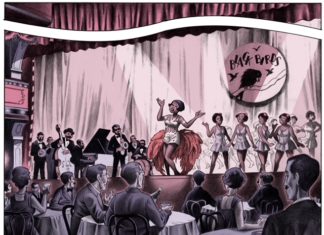En août, peu après les récents attentats, 15 villes françaises dont Nice et Cannes ont interdit le port du burkini sur les plages. De telles mesures ont été décriées à l’étranger notamment dans les pays anglo-saxons. Nous avons souhaité donner la parole à des spécialistes.
Katherine Brown est professeure à l’Université de Birmingham et enseigne l’Islam  politique, la relation entre la femme musulmane et la violence politique. Ses dernières recherches se sont focalisées sur l’Etat Islamique.
politique, la relation entre la femme musulmane et la violence politique. Ses dernières recherches se sont focalisées sur l’Etat Islamique.
Rhydian Morgan est poète, linguiste, philosophe, avocat et membre de l’Oxford Union Society
Que dit le Coran sur le statut des femmes (obligations religieuses, permissions,…)? En tant qu’enfant? Épouse?…
Le Coran est le texte sacré de l’Islam. Les musulmans l’interprète comme la parole de Dieu tel qu’elle a été entendue par le Prophète Mohammed. Certaines des plus vieilles feuilles du Coran sont gardées à Birmingham et à Paris.
Le Coran est complété par les ‘Hadiths’ – collections d’histoires relatant la vie du Prophète et rassemblés par des compagnons (appelés Califes) et d’autres. Ces histoires sont rapportées comme importantes ou négligeables selon les personnes qui ont été les témoins de l’époque. Même s’il relate la vie quotidienne des premiers Musulmans, le Coran informe peu sur la tenue vestimentaire à adopter. Voici les textes :
- Et dis aux croyantes de baisser leurs regards, de garder leur chasteté, et de ne montrer de leurs atours que ce qui en paraît et qu’elles rabattent leur voile sur leurs poitrines; et qu’elles ne montrent leurs atours qu’à leurs maris, ou à leurs pères, ou aux pères de leurs maris, ou à leurs fils, ou aux fils de leurs maris, ou à leurs frères, ou aux fils de leurs frères, ou aux fils de leurs sœurs, ou aux femmes musulmanes, ou aux esclaves qu’elles possèdent, ou aux domestiques mâles impuissants, ou aux garçons impubères qui ignorent tout des parties cachées des femmes. Et qu’elles ne frappent pas avec leurs pieds de façon que l’on sache ce qu’elles cachent de leurs parures. Et repentez-vous tous devant Allah, ô croyants, afin que vous récoltiez le succès.
- Mariez les célibataires d’entre vous et les gens de bien parmi vos esclaves, hommes et femmes. S’ils sont besogneux, Allah les rendra riches par Sa grâce. Car (la grâce d’) Allah est immense et Il est Omniscient.
(Sourate 24: 31-32)
- Ô Prophète! Dis à tes épouses, à tes filles, et aux femmes des croyants, de ramener sur elles leurs grands voiles: elles en seront plus vite reconnues et éviteront d’être offensées. Allah est Pardonneur et Miséricordieux. (33:59)
- Et quant aux femmes atteintes par la ménopause qui n’espèrent plus le mariage, nul reproche à elles d’enlever leurs vêtements de [sortie], sans cependant exhiber leurs atours et si elles cherchent la chasteté c’est mieux pour elles. Allah est Audient et Omniscient. (24:60)
Il y a un autre verset souvent discuté et qui traite de la visite à la maison du Prophète Mohammed :
- Ô vous qui croyez! N’entrez pas dans les demeures du Prophète, à moins qu’invitationet permission ne vous soient faite à un repas, sans être là à attendre sa cuisson. Mais lorsqu’on vous appelle, alors, entrez. Puis, quand vous aurez mangé, dispersez-vous, sans chercher à vous rendre familiers pour causer. Cela faisait de la peine au Prophète, mais il se gênait de vous (congédier), alors qu’Allah ne se gêne pas de la vérité. Et si vous leur demandez (à ses femmes) quelque objet, demandez-le leur derrière un rideau: c’est plus pur pour vos cœurs et leurs cœurs; vous ne devez pas faire de la peine au Messager d’Allah, ni jamais vous marier avec ses épouses après lui; ce serait, auprès d’Allah, un énorme péché.
Le hadith le plus cité attribué au Prophète Mahomet sur ce sujet soit le suivant :
« Asma, la fille d’Abu Bakr, visita le messager de Dieu (paix soit sur lui) portant des vêtements minces. Le messager de Dieu se détourna d’elle et dit : « O Asma, quand une femme atteint l’âge de la puberté, il n’est pas convenable qu’elle montre les parties de son corps excepté pour cela et cela. (Il pointa le visage et les mains)
Cet hadith ne se trouve que dans les hadiths d’Abu Dawud (no. 4095). Selon lui, il est considéré comme peu crédible car le narrateur qui l’a transmis à partir de Aisha reste anonyme. D’autres hadiths retrouvés ailleurs parlent de l’interdiction des vêtements transparents ou des vêtements destinés à l’usure par le sexe opposé. En outre, Aisha a rapporté que lorsque ce verset traitant de la poitrine cachée (24:31), les femmes avaient déchiré leurs vêtements pour en faire des voiles.
Nous pouvons voir à partir de celles-ci que le principe de base est celui de la modestie, et que le but est que les femmes deviennent décentes et libres des harcèlements. Les musulmans au fil du temps ont ensuite discuté de ce qui est le « Zeenah » (pudeur, ou la chasteté) – pour certains, cela inclut toutes les caractéristiques qui embellisent les femmes, telles que les cheveux, le visâge, les mains, etc.
L’introduction d’un couvre-tête provient de l’interprétation du mot khimar. La plupart des traducteurs et commentateurs conviennent que c’était une longue écharpe portée à l’époque du Prophète et qui couvrait la tête d’une femme, le cou et les épaules. Le reste du corps n’était pas voilé.
Le deuxième principe est la vie privée. Le verset est situé dans le contexte du Prophète reçoit des visiteurs pour discuter des affaires courants et pour leur enseigner la foi nouvelle.
Le mot ‘barrière’ est parfois traduit par écran, rideau, cloison, et certains justifient ainsi l’idée d’un « niqab ».
Les citations directes des hadiths et le Coran ne répondent pas à la question de savoir si la burqa ou le hijab ou le niqab (différentes moyens de couvrir la tête et peut-être le visage et le corps) est «islamique» ou non.
Comme dans le Christianisme, il existe beaucoup d’interprétations différentes ; les traditions et les pratiques de l’Islam ont émergé au fil du temps. On pense aux doctrines de l’Église catholique, par exemple : Certaines d’entre d’elles sont bien dans la Bible d’autres non.
Orthodoxes et chrétiens coptes peuvent se tatouer une croix sur les poignets et peuvent placer le symbole du poisson sur leurs portes, pour eux. Il s’agit pour les Chrétiens de déclaration de foi. Pourtant, ce n’est pas dans les textes sacrés.
Ce qui signifie d’ « être » musulman, de pratiquer « l’Islam » et de faire partie des communautés musulmanes est enraciné dans le Coran, mais ne s’y limite pas. Il existe différentes interprétations sur la façon de s’habiller et de s’habiller en publication.
– Quel est l’avis outre-Manche sur la polémique du burkini en France ?
La réaction britannique à la controverse en France sur la burkini est comme on pouvait s’y attendre : mitigée.
Bien qu’il existe certainement des personnes en Grande-Bretagne qui voient toutes ces mesures de privations pour les citoyens musulmans comme un moyen d’arrêter l’« islamisation » en Occident, une telle réponse n’est pas une action politique adéquate, mais bien le fait qu’on a voulu faire « quelque chose » plutôt que rien.
L’influence de Marine Le Pen et de d’autres n’est pas étrangère à une telle réaction.
La plupart des gens, dont les experts de la lutte contre le terrorisme et de contre-radicalisation, voient la politique pour ce qu’elle est : une réaction réflexe conçue pour apaiser ou rassurer les gens. Les préoccupations de sécurité sont prises au sérieux mais ce n’est pas efficace et renforce le sentiment de victimisation des Musulmans.
On peut le constater dans les médias et les discours des hommes politiques.
Il n’existe pas de tels débats au Royaume-Uni. Seuls des groupes marginaux tels que l’UKIP ou extremistes comme Britain First ont soutenu de telles mesures. La BBC a interviewé beaucoup de musulmanes britanniques, qui ont toutes vu ce débat comme « ridicule » ou « scandaleux ». Nigella Lawson, célèbre responsable de télévision a déjà porté un burqini. Le journal, The Guardian, journal de centre-gauche, a publié un article le 15. Août, se moquant de l’interdiction, et proposant les, « 5 raisons de ne pas porter le burkini. »
Même The Telegraph, un journal de droite, a dénoncé l’interdiction dans un article intitulé, « les interdictions du burkini en France sont un acte insensé de fanatisme». La police française a été vue comme la « vraie ennemie de la liberté », et non les femmes qui choisissent de porter le burkini.
Selon le journaliste, l’interdiction renforce simplement la (fausse) idée que le choix de vêtements d’une femme est un acte politique. L’interdiction est largement perçue comme injustifiée, inefficace, contre-productif même.
-La polémique burkini existe-t-elle dans d’autres pays que la France ?
La question du burqini, et des tenues des Musulmanes en général ne font pas débat uniquement en France. Il y a eu des réponses dans toute l’Europe, ainsi qu’au Maroc et au Canada.
En Italie, le ministre de l’Intérieur Angelino Alfano a déjà renoncé à l’interdiction du burkini, mais il y a eu des demandes de la part de l’extrême droite. La Ligue du Nord, populaire en Lombardie, a présenté une motion pour rendre les burkinis interdits autour des lacs de la région et des piscines. Une interdiction existe déjà sur le port de la burqa et du niqab dans les hôpitaux et les bâtiments publics de la Lombardie.
D’autres dans la région, comme la conseillère municipale de Milan, Sumaya Abdel Qader, qui elle-même porte un hijab, a dit qu’il était temps que l’opinion cesse d’imposer aux femmes ce qu’elles peuvent et ne peuvent pas porter.
En Espagne, alors que 30 municipalités catalanes ont tenté d’interdire la burqa dans les lieux publics, la Cour Suprême a jugé ces interdictions illégales. Il y a une interdiction en place à Vitoria qui interdit «la baignade habillée » – ce qui est une interdiction pour tout plutôt que d’une politique ciblant spécifiquement les burkinis, même si il y a a de toute évidence un effet.
La Catalogne abrite la plus grande population musulmane d’Espagne, et est par conséquent un lieu naturel pour le débat. Cependant, la Mairie de Barcelone a totalement exclu l’introduction d’une telle mesure sur les plages de la ville. Il faut reconnaître cependant que le burkini est rarement vu sur les plages de Barcelone actuellement.
En Allemagne, où il existe des tensions évidentes avec les immigrés, et en particulier avec la population immigrée musulmane, il y a eu des restrictions imposées concernant le burqini dans certaines piscines privées. Cependant, la tenue est largement acceptée. L’influent journal, Süddeutsche Zeitung, a critiqué l’interdiction vestimentaire comme un « produit de l’islamophobie ».
Au Canada, il y a eu quelques appels pour une interdiction similaire, mais encore une fois sans un grand soutien. Nathalie Roy, de la Coalition Avenir Québec, a qualifié le burkini, de « symbole de l’intégrisme » empêchant « l’égalité entre les hommes et les femmes. »
Stephanie Vallée, ministre de la Justice, y a répondu en disant qu’au Canada, « une femme a le droit de se vêtir comme elle le souhaite », et d’autres ont fait remarquer que les deux chartes des droits et libertés du Canada et du Québec devraient interdire l’introduction d’une telle mesure.
Enfin, au Maroc, le journal Jeune Afrique a signalé une augmentation des tensions entre partisans et adversaires du burkini.
Certains disent avoir peur de voir les burkinis s’imposer à la plage, alors que ceux qui le portent affirment que leur choix ne fait de mal à personne. Encore une fois, certaines piscines privées ont imposé leur propre interdiction, notamment dans les hôtels et les parcs aquatiques à Marrakech et Casablanca, qui sont des destinations populaires auprès des touristes.
– Comment expliquer le succès du port du burkini ? Est-ce une mode des années 2010 ?
Le burkini a été développé en Australie, par une femme musulmane qui y avait vécu toute sa vie. Ce n’est donc pas une invention européenne, ni même une inspiration du monde islamique. Il a été développé en 2004, des années avant la controverse, et fut un moyen pour les Musulmanes de faire du sport tout en étant fidèles au concept de l’Islam.
Son créateur, Aheda Zanetti, a eu l’idée après avoir vu sa nièce qui tentait de jouer au netball tout en portant le hijab. Le burkini a ensuite été adopté par une jeune fille à Bondi Beach où il y avait un programme de secourisme pour les jeunes musulmans. Le mot est le mélange de burqa (qui signifie ‘manteau’ ou ‘couverture’), et le bikini afin d’intégrer le vêtement musulman à la culture australienne. L’inventeur n’a pas voulu imposer une nouvelle burqa mais il a voulu permettre à la femme de choisir sa tenue.
La question alors est, pourquoi il existe de nos jours une telle contreverse sur le burkini? Il serait simpliste de dire que l’horrible attentat de Nice en est la seule origine, mais cet argument a au moins un certain mérite. Le burkini existe depuis plus d’une décennie, et s’est popularisé en moins 5 ans. Ce n’est qu’en 2016 qu’il a été perçu comme un problème de sécurité, en France. La montée des tensions après les événements horribles de Novembre 2015, l’attaque à Charlie Hebdo au mois de janvier de la même année, et de nombreux autres cas où les citoyens ordinaires ont été ciblés, ont joué sur les nerfs des gens, et ont fait peur aux citoyens. Les terribles événements du 14 Juillet ont aussi frappé les esprits. La date, le lieu, et la nature de l’attaque sont tous significatifs : la fête nationale de la France, le jour le plus important de l’année.
De même que le bord de mer est associé aux vacances – un endroit pour se détendre, libre des contraintes et du stress de la vie quotidienne, un lieu où il n’y a pas de soucis. Un lieu de vacances ne pouvait être associé à un tel carnage. Pourtant, c’est ce qui est arrivé. L’attaque à Nice était une attaque contre l’idée elle-même de la France en tant que nation, et contre ‘la bonne vie.’ Ce fut une attaque sur notre capacité à se détendre, à quitter les contraintes de la vie quotidienne. Et dans cette vie quotidienne, la principale contrainte que nous devons tous supporter c’est la sécurité dans les aéroports et les stations de métro, ou la fouille des sacs dès qu’on entre dans un bâtiment public.
Une telle attaque exige une réponse, mais des réponses appropriées sont difficiles. Elles nécessitent du temps pour se développer et être mises en œuvre. Il n’y a pas de résultats immédiats. Les maires des villes de la Côte d’Azur ont peut être été inspirés par la popularité de l’extrême droite et se sont sentis obligés de répondre brutalement. Il est regrettable qu’ils aient choisi de telles mesures car il n’y aura aucun effet et cela risque même d’intensifier les tensions.
– Pensez-vous que la tenue du burkini est la seule façon pour certaines musulmanes d’aller à la plage ?
Il est clair que, quand on apprend d’où vient la tenue, et en écoutant la réaction des Musulmanes à travers l’Europe, l’interdiction de la burkini va simplement empêcher certaines femmes d’aller à la plage comme elles auraient voulu.
Cette limitation de l’espace public restreint la venue de certaines femmes . Nous ne pouvons pas d’une part soutenir les musulmans, et en particulier les femmes, pour qu’ils puissent participer davantage aux sociétés occidentales et en même temps imposer des règles qui rendent impossible la venue de certaines.
L’interdiction de la burqa, du niqab, et de l’hijab, ont le même effet : réduire les possibilités de certaines femmes musulmanes à participer aux conditions avec lesquelles elles se sentent à l’aise.
D’après le journal Süddeutsche Zeitung, nous envoyons le message que l’interdiction est « de ne pas libérer les femmes et de défendre la laïcité, mais plutôt de délivrer le message ‘on ne veut pas de toi ici. »
Il y a aussi une grande hypocrisie ici de frapper d’interdiction ce qui pollue nos efforts de déradicaliser certaines communautés. Nous semblons dire à la fois que le burkini et les autres tenues ne sont pas les bienvenus car ils sont imposés à la femme et en même temps nous imposons notre propre code vestimentaire. Ni l’un ni l’autre est alors un choix, et si les femmes doivent être vraiment libres de choisir leur propre vêtement, nous devons accepter que leur choix soit différent du nôtre.
Il y a quelques semaines en Allemagne, une Musulmane a été licensiée de son stage pour avoir refusé d’enlever son voile. Au Tajikistan, un pays depuis longtemps hostile à l’Islam, certains dirigeants ont commencé à repertorier celles qui portent le hijab comme tenue sportive. Selon vous, qu’est-ce que toutes ces interdictions révèle ?
Il existe une maxime en droit anglais, qui dit, « Pour que la justice soit faite, il faut la voir comme possible ».
La politique est différente ; elle doit être vue pour se réaliser. Les cas de femmes virées parce qu’elles refusent de retirer leurs foulards ne sont guère plus que des symboles, un baume pour ceux qui pensent que les gouvernements « ignorent le problème».
Il serait faux de dire que l’Europe n’a aucun problème avec l’extrémisme à travers le spectre politique de Daesh, avec la montée des extrêmes politiques à la fois de gauche et de droite. De même que l’Europe a un problème avec sa réponse face aux extrémismes, ou plutôt, chaque pays de l’Europe a un problème avec sa réponse. Pour citer Tolstoï, « Toutes les familles heureuses se ressemblent ; chaque famille malheureuse est malheureuse à sa façon. »
En Grande-Bretagne, la montée de l’UKIP et des euroseptiques nous a conduit au référendum sur l’adhésion de l’UE. En France, le succès continu de Marine Le Pen et du Front National aux élections a forcé les deux grands partis à adopter des politiques plus fermes pour apaiser les partisans du FN. François Hollande et Nicolas Sarkozy, en se positionnant pour les élections présidentielles de l’année prochaine, ont tous les deux faits des déclarations qui auraient été impensables pour le PS et les Républicains il y a cinq ans. Des discours qui sont habituellement dits par Marine Le Pen.
Angela Merkel fait également face à une forte concurrence sur son aile droite. Sa réélection, en Allemagne l’année prochaine, devra être réfléchie avec des idées dont elle n’adhère pas.
Nous avons déjà vu comment d’autres hommes politiques de droite de l’Italie et du Canada ont tenté de faire de telles interdictions une question de choc culturel.
Pourquoi cela arrive-t-il ? Parce que les interdictions sont faciles à mettre en œuvre, et semblent efficaces, même quand elles sont sans effet.
Nous confondons trop facilement la piété religieuse avec l’extrémisme religieux. Si nous pouvons restreindre l’expression de l’appartenance religieuse, nous pouvons contrer les tentatives de radicalisation. Nous nous basons sur la fausse hypothèse que les personnes les plus susceptibles d’être radicalisés, de nous attaquer, doivent aussi être ceux qui sont les plus croyants.
Nous savons que nous ne pouvons pas garantir le risque zéro, et nous savons que les gens ont peur. Nous essayons de répondre à cette crainte en ciblant les symboles les plus visibles de ce que l’on craint – habillement, habitudes, comportements – et ce faisant, nous disons aux gens que, « quelque chose a été fait. »
Qu’importe si la réalité est différente. Ceux qui ont commis les atrocités de Paris, de Nice, et d’Orlando n’auraient pas été arrêtés avant (le meurtrier de Nice était connu pour boire de l’alcool, et n’a presque jamais été vu à la prière de la mosquée locale).
Ce qui est important c’est de calmer la population, et que nos propres adversaires politiques soient vaincus.
En bref, ces interdictions révèlent trois choses : Nous avons plus peur de la réaction à ne rien faire, que de faire la mauvaise chose ; nous ne comprenons pas l’observance religieuse, et nous ignorons l’effet de ces politiques. C’est ce qui justement augmente les sentiments d’aliénation et de discrimination, carburant de la radicalisation.
Last August, Authorities in 15 towns including Cannes & Nice banned burkinis, citing public concern following recent terrorist attacks in the country. A storm of criticism erupted especially in countries such as Great Britain and the United States. We wish to hear British specialists:
 Dr. Katherine Brown is a lecturer in Islamic Studies at the University of Birmingham. She specialises in political Islam and the role of Muslim women in political violence. Her research has lately been focused on the so-called Islamic State.
Dr. Katherine Brown is a lecturer in Islamic Studies at the University of Birmingham. She specialises in political Islam and the role of Muslim women in political violence. Her research has lately been focused on the so-called Islamic State.
 G. Rhydian Morgan is a poet, linguist, philosopher, and barrister, he is also a life member of the Oxford Union Society and former faculty member of the World Debate Institute.
G. Rhydian Morgan is a poet, linguist, philosopher, and barrister, he is also a life member of the Oxford Union Society and former faculty member of the World Debate Institute.
What does the Quran say concerning the status of women (religious obligations, permissions…) as a child? as a wife?…
The Quran is the holy text of Islam, Muslims believe it to be the word of God as spoken to the Prophet Mohammad. Some of the oldest leaves/fragments are in Birmingham in the United Kingdom and in Paris. It is complemented by the ‘Hadiths’ these are collections of stories about the life of the Prophet Mohammad gathered by companions (known as Caliphs) and others. These stories are reported as strong or weak depending on how many different people were able to confirm and witnessed the account discussed. Both of these inform Muslim decisions about everyday life. The Quran doesn’t say a lot about clothing specifically, the following are Yusuf Ali or Muhammad Asad translations into English:
Say to the believing men that they should lower their gaze and guard their modesty [sometimes translated as private parts]: that will make for greater purity for them: and God is well acquainted with all that they do.
And say to the believing women that they should lower their gaze and guard their modesty; that they should not display their zeenah (charms, or beauty and ornaments) except what (must ordinarily) appear thereof; that they should draw their khimar (veils) over their bosoms and not display their zeenah except to their husbands, their fathers …. and that they should not strike their feet so as to draw attention to their hidden zeenah (ornaments). (24:31-32)
O Prophet! Tell your wives and daughters and the believing women that they should draw over themselves their jilbab (outer garments) (when in public); this will be more conducive to their being recognized (as decent women) and not harassed. But God is indeed oft-forgiving, most merciful. (33:59)
And know that women advanced in years, who no longer feel any sexual desire incur no sin if they discard their thiyab (outer garments), provided they do not aim at a showy display of their zeenah (charms or beauty). But it is better for them to abstain (from this); and God is all-hearing, all-knowing. (24:60)
There is one other verse that is discussed as well, which discusses visiting the home of the Prophet Mohammad:
« You who Believe, do not enter the prophet’s apartments for a meal unless you are given permission to do so; do not linger until [a meal] is ready. When you are invited, go in; then, when you have taken your meal, leave. Do not stay on and talk, for that would offend the Prophet, though he would shrink from asking you to leave. Allah does not shrink from the truth. When you ask his wives for something, do so from behind a barrier [screen or curtain]: that is purer for your hearts and theirs. It is not right for you to offend Allah’s messenger, just as you should never marry his wives after him: that would be grievous in Allah’s eyes. Allah has full knowledge of all things, whether you reveal them or not. » (Qur’an 33:53-54)
The most quoted hadith attributed to the Prophet Mohammad on this topic is as follows:
Aisha said, « Asma, daughter of Abu Bakr (that is, Aisha’s sister), entered upon the Apostle of God (pbuh) wearing thin clothes. The Apostle of God turned his attention from her and said, « O Asma, when a woman reaches the age of menstruation, it does not suit her except that she displays parts of her body except this and this, » and he pointed to her face and hands. (Sunan Abi Dawud)
This hadith is found only in the hadith collection of Abu Dawud (no. 4095). According to Abu Dawud, it is considered weak because the narrator who transmitted it from Aisha is not known (mursal). Other hadith found elsewhere talk about not wearing see-through clothes or clothing intended for wear by the opposite sex. Also, Aisha reported that when the verse above was revealed about covering the breast (24:31), the women tore their thick outer garments to make veils.
We can see from these that the main principle is that of modesty, and that the purpose is so that would be recognised as decent women and not harassed in public. Muslims over time have then discussed what counts as ‘zeenah’ (modesty or chastity) – for some this includes all elements that make women beautiful, such as hair, face, hands etc. The inclusion of a head covering is derived from interpretation of the word khimar in 24:31 above. Most translators and commentators agree that this was a loose scarf worn at the time of the Prophet which covered a woman’s head, neck and possibly shoulders, leaving the rest exposed. The second principle is privacy. The verse is situated in the context of the Prophet having constant visitors to discuss business and teach them about the new faith. The word barrier is sometimes translated as screen, curtain, partition, and it is from this that the idea of a ‘niqab’ and ‘purdah’ is often justified.
However direct quotations from hadith and Qur’an however do not resolve the question of whether the burqua or hijab or niqab (different forms of covering the head and possibly the face and body) is ‘Islamic’ or not. Like Christianity there are many different interpretations, traditions, and practices in Islam that have emerged over time. Think of the doctrines of the Catholic Church for example not all of these are in Bible explicitly. Orthodox and Coptic Christians may tattoo a cross on their wrists and talk about it in the context of placing the sign of the fish on doors, for them it is an essential part of belonging to the Christian community and a declaration of faith. What it means to ‘be’ Muslim, to practice ‘Islam’ and be part of Muslim communities is rooted in the Quran but not limited to it. This includes decisions about what to wear and how to behave in public.
What do the British think of this French controversial?
The British reaction to the controversy in France over the burqini is as one would expect, mixed. Whilst there are certainly elements within Britain that see any measure which limits the freedoms and expression of Muslim citizens to halt what they see as the ‘Islamification’ of Britain/ Europe/ the West as a positive, such a response is not based on any practical effect of the policy but simply on the fact that ‘something’ is being done. This parallels the support for the policy expressed by Marine Le Pen and others, but such approval is not widespread. Most people, and certainly those with experience and expertise in counter-terrorism and counter-radicalisation see the policy for what it is: a knee-jerk reaction designed to appease or reassure people that security concerns are being taken seriously, but which has no practical benefit and risks the further alienation and sense of victimisation felt by people of Muslim faith.
This can be seen in the media treatment of the news, and the broad political response. There have been no serious calls for such a ban to be replicated in the UK, and the only political support has come from fringe groups such as UKIP, or extremist groups such as Britain First. The BBC interviewed a succession of British Muslim women, all of whom described the ban as, “ridiculous,” or, “outrageous,” and with one respondent commenting that Nigella Lawson, a TV chef and personality, has sported a burqini previously. The Guardian newspaper, a centre-left wing publication, published an opinion piece on August 15th mocking the ban, and providing, “Five Reasons Not To Wear The Burqini.” The Telegraph, a right-wing newspaper, also came out against the ban in an article entitled, French burqini bans are a foolish act of fanaticism, in which they argued that it was the police who were the, “true enemies of freedom,” not women who choose to wear the burqini. In the opinion of the writer, the ban simply reinforces the (false) idea that a woman’s choice of clothing must be a political statement. It is fair to say, therefore, that the ban is seen broadly as unwarranted, ineffective, counter-productive even; it is not something which has support in the UK, apart from in those fringe or extremist groups already mentioned.
Does the burqini ‘problem’ only take place in France? Are there any other countries where it brings tensions too?
The issue of the burqini, and the dress of Muslim women more generally, is not something that only arises in France. There have been responses to the ban across Europe, as well as in Morocco and Canada. In Italy, a similar ban has already been ruled out by Interior Minister Angelino Alfano, but there have been predictable calls of support from the Italian far-right. The Northern League, prominent in Lombardy, have submitted a motion for the burqini to be banned in the region’s lakes and swimming pools. This follows an existing ban on the wearing of burqas and niqabs in Lombardy’s hospitals and public buildings. Others in the area, such as Milanese councilwoman Sumaya Abdel Qader, who herself wears a hijab, have said that it is time people stopped trying to tell women what they can and cannot wear. In Spain, whilst thirty Catalan municipalities have attempted to ban the wearing of burqas in public places, the Supreme Court has ruled such bans illegal. There is a ban in place in Vitoria which prohibits, ‘bathing whilst clothed’ – this is a general proscription rather than a policy specifically targeting the burqini, although it obviously has that effect. Cataluña is home to the largest Spanish Muslim population, so is a natural focal point for this debate, but Barcelona’s City Hall has ruled out completely the introduction of such a measure on the city’s beaches. It must be acknowledged though that the burqini is rarely seen on Barcelona’s beaches as it is. In Germany, where there are obvious tensions surrounding immigration, and particularly the migrant Muslim population, there have been restrictions placed on burqinis by some private swimming pools, but the item itself is widely accepted. The influential Süddeutsche Zeitung newspaper has criticised the ban as a, “product of Islamophobia.” In Canada, there have been few calls for a similar ban, but again without wider support. Nathalie Roy of the Coalition Avenir Quebec called the burqini, “a symbol of fundamentalism,” which prevents, “equality between men and women.” Stephanie Vallee, Justice Minister, responded by saying that in Canada, “a woman has the right to dress as she wishes,” and others have pointed out that both Quebec’s and Canada’s charters of rights and freedoms would prohibit the introduction of any such measure. Finally, in Morocco, Jeune Afrique has reported increasing tensions between supporters and opponents of the burqini. Some have said they felt, “scared,” seeing burqinis worn on the beach, whilst those wearing them are keen to point out that their choice is not hurting anyone. Again, some private pools have imposed their own ban, notably in hotels and waterparks in Marrakesh and Casablanca which are popular destinations with tourists.
How do you explain the burqini fast-growing? Is it a real 2010s fashion?
The burqini was first developed in Australia, by a Muslim woman who had been raised there her whole life! It is therefore not a European invention, nor does it spring from the Islamic world. It was developed in 2004, years before this controversy arose, and was a way for Muslim women who wished to observes codes of modesty in dress, to play sport. Its creator, Aheda Zanetti, was inspired after watching her niece attempt to play netball whilst wearing a hijab, and did not come to national prominence until a later initiative to integrate young Muslim boys and girls into life-saving activities at Bondi Beach, prompted one young girl to wear one. The word, too, was one of convenience – a marriage of burqa (which simply means cloak or cover), and bikini, to illustrate the garment’s blend of Muslim and Australian culture. The inventor is clear in her opinion that there is no requirement to wear a burqa, and that it is always the wearer’s choice. She therefore expects the same of the burqini.
So the question is, why is there such focus on the burqini now? It would be simplistic to say that it is all because of the Nice atrocity, but that argument has at least some merit. Burqinis have existed for over a decade, and have been popular for at least five years, but is only in 2016 that they have been perceived as a problem and a security issue in France. Rising tensions following the horrific events of November 2015, the Charlie Hebdo attack, and numerous other instances where ordinary citizens have been targeted, have made some citizens afraid, nervous of people and things they do not know, and do not try to understand. The terrible events of Bastille Day this year strike at the heart of such fear. The date, the location, and the nature of the attack are all significant: France’s national holiday, the most important day of the year symbolically, is a time for feasting, celebrating, and above all, sharing with loved ones. Similarly, the beachfront is associated with pure pleasure – a place to relax, to be free of the constraints and stresses of the everyday, a place where no worries or cares exist as we lie in the sun, giving in to our own pleasure. It is a place of holidays, of fun and games – not somewhere we would normally associate with such carnage. Yet that is what happened. The Nice attack, horrendous in its loss of life, was an attack on France’s idea of itself as a nation, and on people’s idea of what it means to live, ‘the good life.’ It was an attack on our care-free days, when nothing should matter except the occasional cloud blocking out our sun, or maybe a little sand blowing on our ice-cream. It was an attack on our ability to relax, to unwind, to relieve ourselves of the stresses of everyday life. And in that everyday life, one of those stresses that we must all endure, is the marker of attacks – increased security at airports and metro stations, having bags and clothing searched as we enter public buildings. Such an attack demands a response, but proper responses are complex, require time to develop and implement, and do not usually yield results immediately. Mayors of towns along the Riviera, some perhaps motivated by personal political need (southern municipal elections are often where the Front Nationale performs well), needed to be seen to be doing something, anything, in response. It is regrettable that they hit upon such a policy, which, although immediate and highly visible, will have no practical benefit, and risk exacerbating those tensions.
Do you think burqini might be thought as the only way to go to the beach for some women?
It is clear both from learning about how the burqini came to be, and from listening to the reaction of Muslim women across Europe, that a ban on the burqini will simply prevent some women from going to the beach as they want. This limiting of the public space, restricting participation to those women who are willing to change their dress to conform to our own prejudices about how a woman should appear, can only be counter to wider measures to address the sense of alienation felt by any members of that community. We cannot on the one hand argue that Muslim people, and in particular women, do more to participate fully in western societies whilst on the other making it impossible for some of them to do so. Bans on burqas, niqabs, and hijabs, have the same effect – to reduce the opportunities for some Muslim women to participate on terms with which they feel entirely comfortable. In the words of Süddeutsche Zeitung, we are sending the message that the ban is « not to liberate women and defend secularism but rather [because] ‘we do not want you here’. » [Author’s emphasis.]
There is also a significant hypocrisy here which is obvious to those affected by the ban, and further undermines our efforts to make people feel part of our society, and to tempt them away from those would seek to radicalise. We seem to be saying at once that the burqini and other forms of ‘modest dress’ are not welcomed because they are imposed on women, because they represent a lack of women’s freedoms and the lack of equality between the sexes, whilst at the same time imposing our own dress code and standards upon them. Neither then is a choice, and if women are to be truly free to choose their own dress, we must accept that their choice might be something different to ours.
In Germany, a Muslim woman was fired from her government internship when she refused to remove her headscarf. In Tajikistan, a country long hostile to Islam, some officials have begun keeping lists of women who sport hijabs. To you, what do all these bans reveal?
There is a maxim in English law, that in order for justice to be done, it must be seen to be done. Politics is different; it only needs to be seen to be done. The cases of women being let go from positions because they refuse to remove headscarves or other items of clothing are little more than gestures, a balm to those who think governments are, ‘ignoring the problem.’ It would be wrong to say that Europe does not have a problem with extremism across the political spectrum; from those who would align with Daesh to the rise of the political extremes of both left and right. Equally, Europe has a problem with its response to such extremism, or rather, each part of Europe has a problem with its response; to quote Tolstoy, “All happy families are alike; each unhappy family is unhappy in its own way.” In Great Britain, the rise of UKIP, and people voicing concerns over unchecked immigration, led to the referendum on EU membership. In France, the continued success of Marine Le Pen and the Front National in local and municipal elections have spurred both major parties into adopting policy that would appease FN supporters. Francois Hollande and Nicolas Sarkozy, positioning themselves for next year’s presidential elections, have both made statements that would have been almost unthinkable for the PS and the UMP even five years ago, but that we are long used to hearing from the mouth of Le Pen. Similarly, Angela Merkel, who also faces stiff competition from the right wing, and re-election, in Germany next year, needs to be seen to be taking action, even that with which she does not necessarily agree. We have already seen how other right-wing politicians from Italy to Canada are attempting to make such bans an issue of cultural clash, or incompatibility of values. Why is this happening? Because bans are easy to implement, and look strong, even when they have no effect, and because we far too easily conflate religious piety with religious extremism. If we can restrict expression of religious adherence, runs the narrative, we can counter attempts to radicalise people towards extremism. We base this on the false assumption that those most likely to be radicalised, and to attack us, must also be those who are most observant of their religion, despite repeated attempts by Muslim people, communities, and authorities, to reassure us that those who would attack us do not represent a ‘true’ version of Islam. We know we cannot ensure that there will be no more attacks, and we know people are afraid. We attempt to address that fear by targeting the most visible symbols of what is feared – dress, habits, behaviour – and in doing so, we tell people that, ‘something is being done.’ It does not matter that the reality is entirely different, that those who have committed atrocities, in Paris, Nice, Orlando and elsewhere, would not have been halted by such restrictive measures (the Nice attacker was known to drink alcohol, and was almost never seen at prayers at the local mosque) – all that matters is that people are assuaged, and that our own political opponents are defeated. In short, such bans reveal three things: that we are more afraid of the reaction to doing nothing than to doing the wrong thing, that we misunderstand religious observance, and that we ignore the effect of such policies, which is precisely to increase the feelings of alienation and discrimination which fuel radicalisation and such attacks in the first place.







